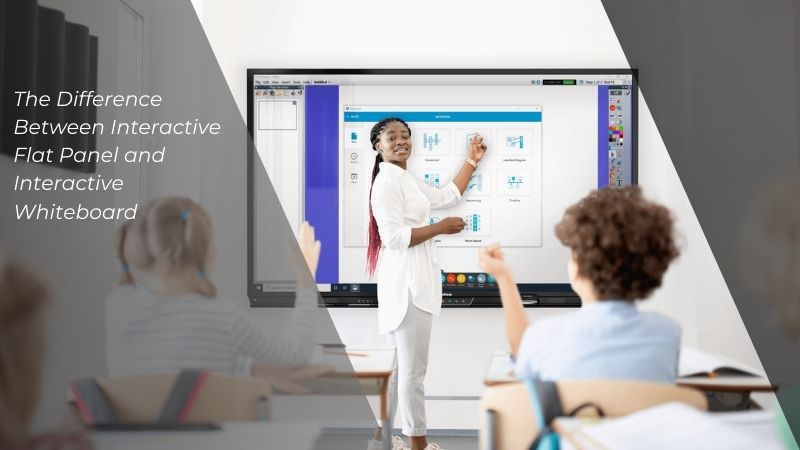What is The Difference Between Interactive Flat Panel and Interactive Whiteboard?
With the emergence of interactive technology, any form of communication, collaboration in every setting has never been easier.
The utilization of Interactive flat panel (IFP) and interactive whiteboard (IWB) has been an integral part in either business or educational settings.
Although these devices might look alike, there are few key difference between Interactive Flat Panel and Interactive Whiteboard. Let’s break down now!
The Difference Between Interactive Flat Panel and Interactive Whiteboard

Interactive Flat Panel Displays (IFPDs) are revolutionizing the way we present and collaborate.
These versatile touchscreen displays offer a dynamic alternative to traditional whiteboards and projectors, enabling users to seamlessly access, manipulate, and share digital content.
From office meetings to school classrooms, IFPDs are transforming the educational and professional landscape.
Whereas a flat panel display that blends conventional writing surfaces with digital capabilities is called an interactive whiteboard (IWB).
It enables users to use their fingers, a stylus, or other physical pens to interact with the content on the screen.
It is worth noting that in order to annotate project files and displays, IWBs can also be connected to computers.
1. Concept and Design
IFPs are flat-screen panels equipped with touch screen technology. Usually they vary in size from 55 to 86 inches so they are suitable for a variety of room sizes and purposes.
IFP’s are also connected to additional devices such as computers or laptops. These panels support multimedia integration so they can be used to play video, images, and interactive software.
While the IWB is a large board with interactive technology, it often serves as a projection screen and relies on separate projectors to display images. It is larger in size and generally exceeds 90 inches.
This interactive panel will be perfect if you want a clearer visibility to be displayed in front of the audience. The design differences on the following two panels create a different user experience.
2. Screen Resolution
IFPs are generally equipped with a much higher screen resolution than IWBs. The results are much sharper, more detailed, and clearer.
In addition, the touch screen responsiveness of the IFP tends to be better, thus providing a more smooth and intuitive user experience.
Nevertheless, IWB remains the right choice if you are looking for an interactive solution at an affordable price. So, you can choose according to your needs.
3. Flexibility
The difference between the Interactive Flat Panel and the next Interactive Whiteboard is in terms of flexibility. IFPs can be used independently or connected to additional devices such as computers or laptops.
While IWBs depend on separate projectors and often require larger space for installation. In this case IFP is much more practical because it has an internal operating system which makes it easier and more flexible to use.
4. Additional Technology
IFPs are generally supplied with internal operating systems such as Android or Windows. This allows you to install additional applications thus providing a variety of options to improve functionality.
While IWBs depend on the system used such as the connected computer and integration with additional devices and applications will depend on the compatibility of the system and the installed software.
5. Purpose
The IFP is generally smaller than the IWB and is ideal for small to medium-sized rooms such as classrooms, meeting rooms, and offices. Its small screen allows the view to feel more comfortable for the user.
On the IWB, the screen size is much larger and suitable for use in large rooms, such as auditoriums, halls, and gyms. Its large screen makes its visibility clear to the audience even from a distance.
There you go, the difference between interactive flat panel and interactive whiteboard all in one place!
Before you decide between those two, you’ll need to know that those devices need the SDPPI approval to be eligible to sell or distribute in Indonesia.
The SDPPI Approval is the type of certification for any devices that use radio wave technology. This ensures every device that is sold and distributed in Indonesia is within Indonesian standard.


